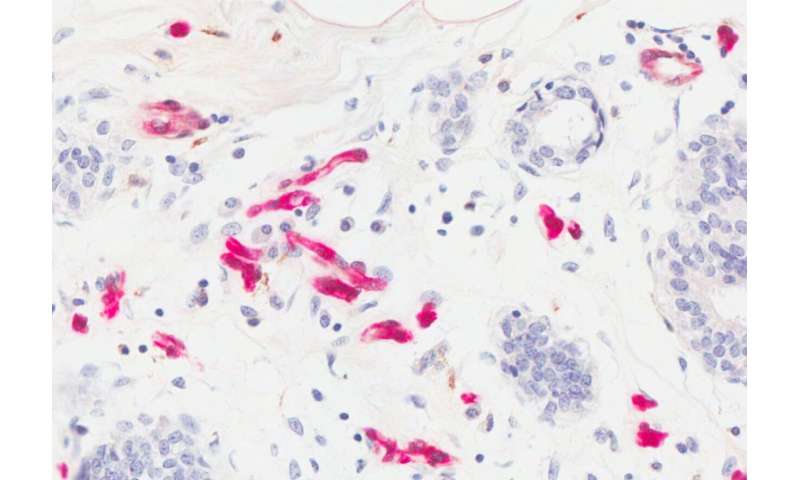
It is widely accepted that higher levels of body fat increase the risk of developing breast cancer, as well as other cancers. Based on his ongoing research, Bing Li, Ph.D., associate professor in the Department of Microbiology and Immunology and UofL Health—James Graham Brown Cancer Center at the University of Louisville, has published an article which proposes a unique theory that a protein secreted by fat cells drives the development of breast cancer.
Li has been conducting research funded by the National Cancer Institute for the past five years which led him to the connection between activity of a protein expressed in fatty tissue and an increase in breast cancer development. Li and colleagues shared the theory in an invited forum in Trends in Molecular Medicine, a Cell Press journal, published online last week. The article describes Li’s theory that adipose fatty acid binding protein (FABP4), expressed in fatty tissue, is responsible for fueling breast cancer tumor growth.
“Many types of cancer are related to obesity, not only breast cancer. More than 13 types of cancer are clearly associated with obesity and I think the list will go on and on once we have more data,” Li said. “In our research, we found the fatty acid binding protein family, especially one member, FABP4, plays a very critical role in the association of obesity and cancer, most specifically breast cancer. We theorize that FABP4 is responsible for the underlying molecular mechanism which promotes obesity-associated breast cancer development.”
Adipose tissue in the body produces FABP4 within fat cells, where it processes and distributes water-insoluble long-chain fatty acids. A certain amount of FABP4 enters the bloodstream under normal conditions. However, as a higher volume of fat tissue is accumulated, more FABP4 is secreted into circulation.
“When we get obese, this protein is secreted out much more into the circulatory system,” Li said. “Normally these molecules are inside the cells, but when people are obese, the molecules are outside.”
Li’s theory offers two ways in which FABP4 may stimulate growth in breast cancer tumors.
First, within the cells, FABP4 increases in certain tumor-associated macrophages, which accumulate in tumors to promote tumor growth. Li’s research also revealed that when FABP4 is inhibited, tumor growth is reduced in animal models even though the adipose tissue remained.
Second, when elevated levels of FABP4 circulate outside the fat cells in obesity, the protein promotes breast cancer development through direct interaction with breast cancer cells. In animal research, mammary tumor development and growth were reduced in obese animals in which FABP4 was controlled.
In addition, FABP4 in the bloodstream appears to work in multiple mechanisms to fuel interactions between tumor components and fat cells, thereby promoting cancer development.
Moreover, Li’s research group recently published findings in Cancer Research showing that different types of high-fat diets have different effects on tumor development. High-fat diets of either cocoa butter or fish oil both result in fat-induced obesity. However, the cocoa butter diet results in increased mammary tumor growth, while the fish oil diet does not. This study not only confirms the critical role of FABP4 in obesity-associated cancer, but reveals that not all obesity promotes the development of tumors.
Li and his team believe a better understanding of how FABP4 works both within macrophages and in circulation could provide opportunities to prevent certain breast cancers from progressing. It may also lead to the development of treatment methods that target FABP4 with drugs or specific antibodies.
Source: Read Full Article
